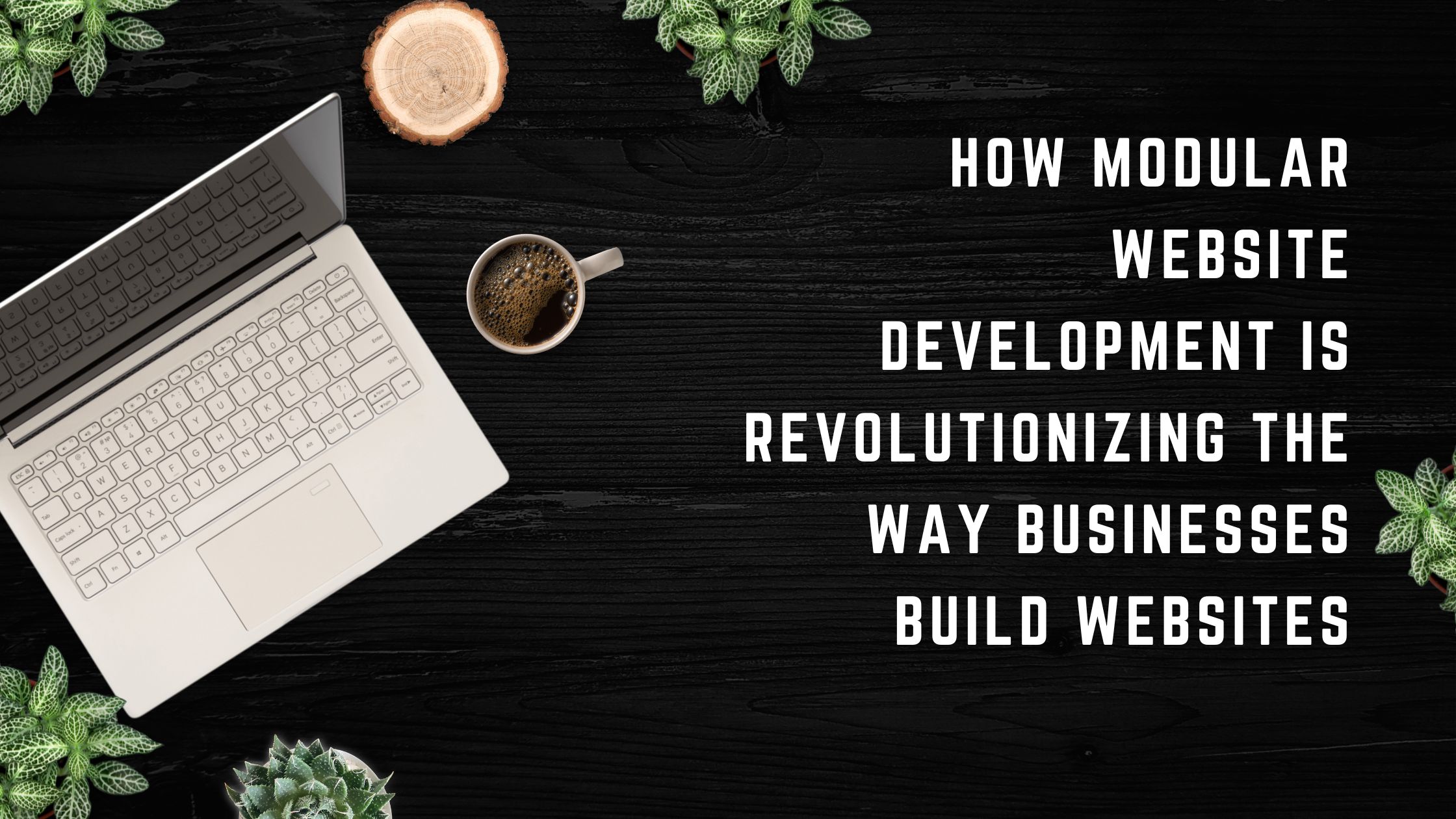How Modular Website Development is Revolutionizing the Way Businesses Build Websites
In a world where quick and customizable solutions are key, modular website development is paving the way for businesses to create dynamic and efficient websites like never before. Say goodbye to lengthy, cumbersome website building processes – it’s time to embrace the revolution of modular web development. Join us as we explore how this innovative approach is changing the game for businesses of all sizes and industries.
Introduction to Modular Website Development
In a world where digital presence is paramount, the way businesses build websites is undergoing a revolutionary transformation. Enter Modular Website Development – the game-changer that’s shaking up traditional web design practices and empowering businesses to create dynamic, scalable websites like never before. Let’s dive into how this innovative approach is reshaping the digital landscape and why your business should jump on board the modular bandwagon!
What is Modular Website Development?
When it comes to website development, the traditional approach involved building a site from scratch, often resulting in lengthy timelines and high costs. However, with modular website development, the game has shifted.
Modular website development is a method that involves creating a website using pre-built modules or components. These modules can be easily added, removed, or customized according to specific needs. Think of it as building with Lego blocks – you can mix and match different pieces to create your unique design.
This approach offers flexibility and scalability as businesses can quickly adapt their websites to changing requirements without starting from square one each time. It also promotes consistency across web pages while streamlining the development process for faster turnaround times.
In essence, modular website development empowers businesses to build dynamic and user-friendly websites efficiently by leveraging ready-made components tailored to their brand’s needs.
Benefits of Using a Modular Approach for Website Development
Modular website development offers a range of benefits that can significantly enhance the efficiency and flexibility of building websites. One major advantage is the ability to reuse modular components across different projects, saving time and effort in the long run. This approach also allows for easier scalability, as new features or updates can be seamlessly integrated without disrupting the entire website.
Moreover, modular development promotes better collaboration among team members by breaking down complex tasks into smaller, more manageable modules. This not only streamlines the development process but also ensures consistency in design and functionality throughout the website. Additionally, using pre-built modules can help reduce errors and improve overall site performance.
Another key benefit of modular web design is its adaptability to changing market trends and user preferences. With a modular approach, businesses can quickly iterate on their websites based on feedback and analytics data, staying ahead of competitors in today’s fast-paced digital landscape.
Challenges and Limitations of Modular Website Development
When it comes to modular website development, there are certain challenges and limitations that businesses may encounter along the way. One common challenge is ensuring compatibility between different modules. Since modules are developed independently, integrating them seamlessly can sometimes be tricky.
Another issue is maintaining consistency in design throughout the website. With multiple modules being used, ensuring a cohesive look and feel can require extra effort and attention to detail. Additionally, scalability can pose a challenge as businesses grow and need to add more features or functionalities to their websites.
Furthermore, managing dependencies between modules can also be complex at times. Making sure that changes in one module do not negatively impact others requires careful planning and coordination. Despite these challenges, with proper planning and execution, businesses can still benefit greatly from the flexibility and efficiency that modular website development offers.
How to Get Started with Modular Website Development for Your Business
So, you’ve decided to embark on the journey of modular website development for your business. Exciting times ahead! The first step is to assess your current website structure and identify areas where modularity can bring efficiency and flexibility.
Next, research different modular development frameworks and tools available in the market. Choose one that aligns with your business needs and goals. It’s essential to understand how each module interacts with others to create a cohesive website experience.
Once you have selected your tools, start breaking down your website into smaller, reusable modules. This process requires careful planning and strategic thinking to ensure seamless integration across all components.
Collaborate with your team members or developers to implement these modules effectively. Regular communication and testing are crucial during this phase to iron out any potential issues before going live.
Lastly, don’t forget about maintenance post-launch. Regularly update and optimize your modules to keep up with evolving trends and technologies in the digital landscape.
Future Predictions and Trends for Modular Web Design
As technology continues to evolve, the future of modular web design is promising. One trend we can expect to see is a greater emphasis on customization and personalization. Modular development allows for flexibility in creating unique user experiences tailored to individual needs.
Another prediction is the rise of AI integration within modular websites. Artificial intelligence will enable smarter content recommendations, automated updates, and enhanced user interactions. This seamless integration will streamline website maintenance and improve overall performance.
Furthermore, we anticipate an increase in mobile-first modular designs as more users access websites via smartphones and tablets. Responsive modules will become crucial for delivering consistent user experiences across various devices.
In addition, the optimization for voice search compatibility will be essential as voice-controlled devices like smart speakers gain popularity. Websites developed with modular design principles can easily adapt to these changing search behaviors without compromising functionality or aesthetics.
Overall, the future of modular web design is exciting with endless possibilities for innovation and improved user experiences.
Conclusion: Why Your Business Should Consider Adopting a Modular Approach to Website Development.
When it comes to building a successful online presence, the way your website is developed plays a crucial role. Modular website development offers a streamlined and efficient approach that can revolutionize the way businesses create their online platforms.
By adopting a modular approach, businesses can benefit from faster development times, easier scalability, improved consistency across different pages, and enhanced flexibility for future updates. With case studies showcasing how leading companies have leveraged modular development to achieve remarkable results, it’s clear that this methodology is here to stay.
While there may be challenges and limitations associated with modular website development, the advantages far outweigh any drawbacks. By taking the time to understand how to get started with modular web design for your business, you can set yourself up for success in an ever-evolving digital landscape.
As we look towards the future of web design trends, it’s evident that modular approaches will continue to shape the way websites are built and maintained. Embracing this innovative method can give your business a competitive edge and ensure that your online presence remains dynamic and adaptable in response to changing market demands.
In conclusion: The time is now for businesses to consider adopting a modular approach to website development. By doing so, you’re not just creating a website – you’re laying the foundation for sustainable growth and success in the digital realm.




